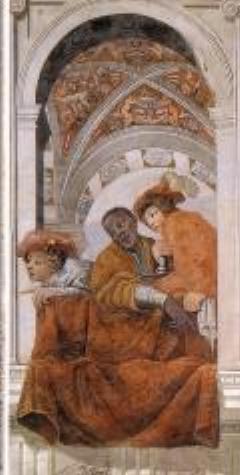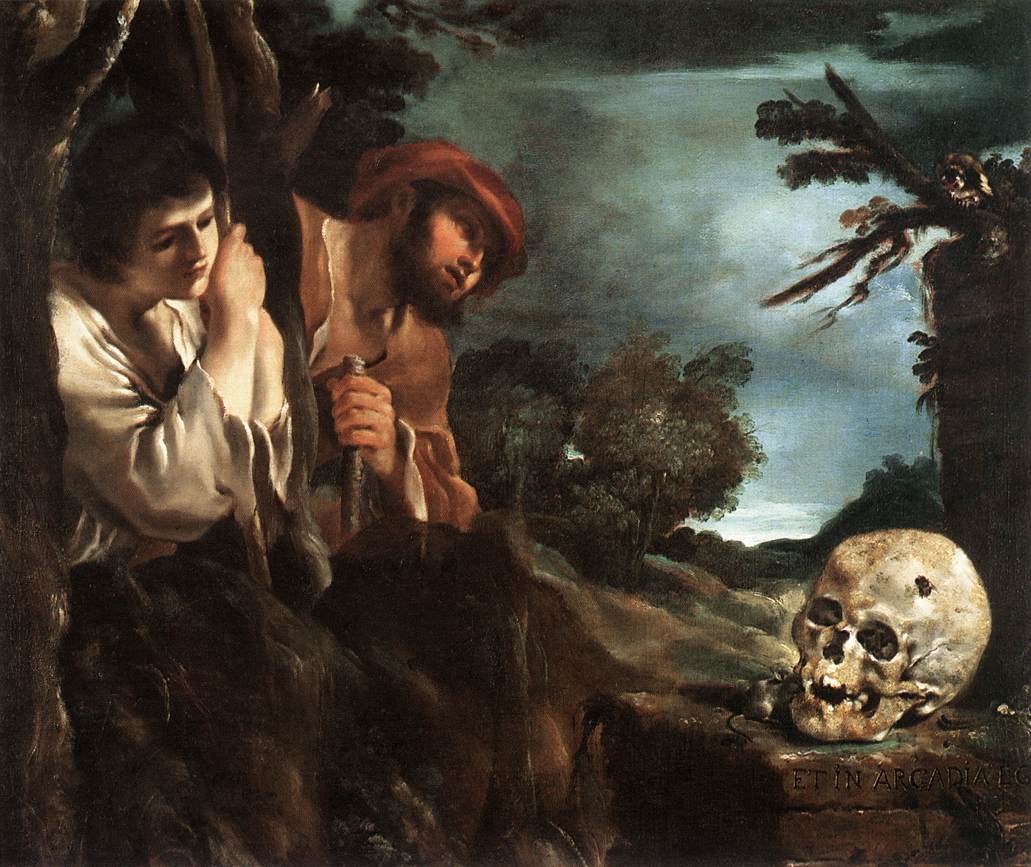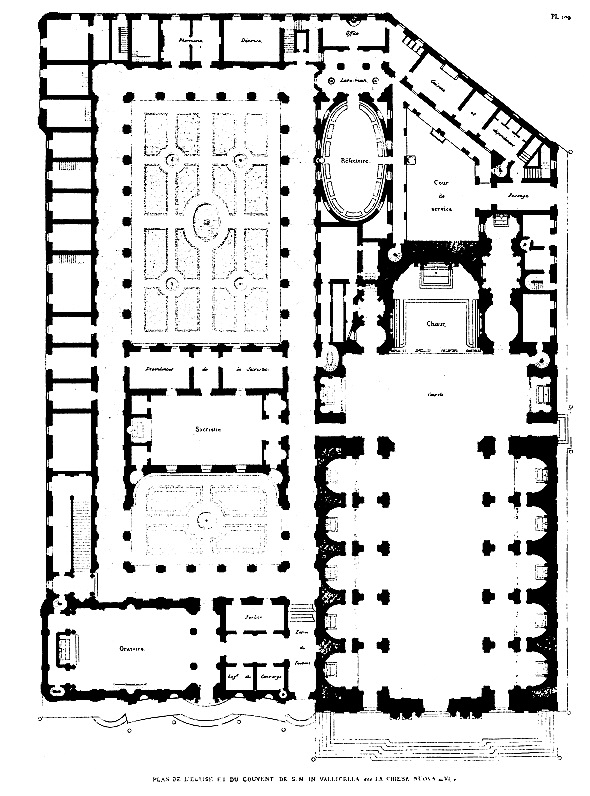|
Giacomo Serra (cardinal)
Giacomo Serra (1570–1623) was a Catholic cardinal. Wikipedia:SPS, He was very active as a papal representative to the Emperor during the Long Turkish War. Life He was a son of the noblewoman Claudia Lomellini and her husband Antonio Maria Serra, deputy to Genoa's Nobile Vecchio Portico and a senator of Florence. When his father died in 1579, Giacomo began studying law. He moved to Rome, where in January 1601 he was made a clerk to the Apostolic Camera. In May of that year he was appointed general commissioner of the army that Pope Clement VIII sent to Hungary against the Turks. Serra had to organize the embarkation of the 9,000 pontifical troops in Ancona and their subsequent journey from the disembarkation point to Zagreb. In October, the papal mercenaries took part in the unsuccessful Siege of Nagykanizsa. Serra sent regular reports to Rome on the operations. He and the surviving companies arrived in Ravenna in early February. In the summer of 1602, Serra was sent to Vienna ... [...More Info...] [...Related Items...] OR: [Wikipedia] [Google] [Baidu] |
Catholic Church
The Catholic Church (), also known as the Roman Catholic Church, is the List of Christian denominations by number of members, largest Christian church, with 1.27 to 1.41 billion baptized Catholics Catholic Church by country, worldwide as of 2025. It is among the world's oldest and largest international institutions and has played a prominent role in the history and development of Western civilization.Gerald O'Collins, O'Collins, p. v (preface). The church consists of 24 Catholic particular churches and liturgical rites#Churches, ''sui iuris'' (autonomous) churches, including the Latin Church and 23 Eastern Catholic Churches, which comprise almost 3,500 dioceses and Eparchy, eparchies List of Catholic dioceses (structured view), around the world, each overseen by one or more Bishops in the Catholic Church, bishops. The pope, who is the bishop of Rome, is the Papal supremacy, chief pastor of the church. The core beliefs of Catholicism are found in the Nicene Creed. The ... [...More Info...] [...Related Items...] OR: [Wikipedia] [Google] [Baidu] |
Pope Paul V
Pope Paul V (; ) (17 September 1552 – 28 January 1621), born Camillo Borghese, was head of the Catholic Church and ruler of the Papal States from 16 May 1605 to his death, in January 1621. In 1611, he honored Galileo Galilei as a member of the papal Accademia dei Lincei and supported his discoveries. In 1616, Pope Paul V instructed Cardinal Robert Bellarmine to inform Galileo that the Copernican theory could not be taught as fact, but Bellarmine's certificate allowed Galileo to continue his studies in search for evidence and use the geocentric model as a theoretical device. That same year Paul V assured Galileo that he was safe from persecution so long as he, the Pope, should live. Bellarmine's certificate was used by Galileo for his defense at the trial of 1633. Trained in jurisprudence, Borghese was made Cardinal-Priest of Sant'Eusebio and the Cardinal Vicar of Rome by Pope Clement VIII. He was elected as Pope in 1605, following the death of Pope Leo XI. Pope ... [...More Info...] [...Related Items...] OR: [Wikipedia] [Google] [Baidu] |
Cardinal-Deacon
A cardinal is a senior member of the clergy of the Catholic Church. As titular members of the clergy of the Diocese of Rome, they serve as advisors to the pope, who is the bishop of Rome and the visible head of the worldwide Catholic Church. Cardinals are chosen and formally created by the pope, and typically hold the title for life. Collectively, they constitute the College of Cardinals. The most solemn responsibility of the cardinals is to elect a new pope in a conclave, almost always from among themselves, with a few historical exceptions, when the Holy See is vacant. During the period between a pope's death or resignation and the election of his successor, the day-to-day governance of the Holy See is in the hands of the College of Cardinals. The right to participate in a conclave is limited to cardinals who have not reached the age of 80 years by the day the vacancy occurs. With the pope, cardinals collectively participate in papal consistories, in which matters of importa ... [...More Info...] [...Related Items...] OR: [Wikipedia] [Google] [Baidu] |
Guercino
Giovanni Francesco Barbieri (February 8, 1591 – December 22, 1666),Miller, 1964 better known as (il) Guercino (), was an Italian Baroque painter and draftsman from Cento in the Emilia region, who was active in Rome and Bologna. The vigorous naturalism of his early manner contrasts with the classical equilibrium of his later works. His many drawings are noted for their luminosity and lively style. Biography Giovanni Francesco Barbieri was born into a family of peasant farmers in Cento, a town in the Po Valley mid-way between Bologna and Ferrara.Mahon, 1937a Being cross-eyed, at an early age he acquired the nickname by which he is universally known, Guercino (a diminutive of the Italian noun , meaning 'squinter').Turner, 2003 Mainly self-taught, at the age of 16, he worked as apprentice in the shop of Benedetto Gennari, a painter of the Bolognese School. An early commission was for the decoration with frescoes (1615–1616) of Casa Pannini in Cento, where the naturalis ... [...More Info...] [...Related Items...] OR: [Wikipedia] [Google] [Baidu] |
Rubens
Sir Peter Paul Rubens ( ; ; 28 June 1577 – 30 May 1640) was a Flemish artist and diplomat. He is considered the most influential artist of the Flemish Baroque tradition. Rubens' highly charged compositions reference erudite aspects of classical and Christian history. His unique and immensely popular Baroque style emphasised movement, colour, and sensuality, which followed the immediate, dramatic artistic style promoted in the Counter-Reformation. Rubens was a painter producing altarpieces, portraits, landscapes, and history paintings of mythological and allegorical subjects. He was also a prolific designer of cartoons for the Flemish tapestry workshops and of frontispieces for the publishers in Antwerp. Rubens was born and raised in the Holy Roman Empire The Holy Roman Empire, also known as the Holy Roman Empire of the German Nation after 1512, was a polity in Central and Western Europe, usually headed by the Holy Roman Emperor. It developed in the Early Middle Ages, ... [...More Info...] [...Related Items...] OR: [Wikipedia] [Google] [Baidu] |
Santa Maria In Vallicella
Santa Maria in Vallicella, also called Chiesa Nuova, is a church in Rome, Italy, which today faces onto the main thoroughfare of the Corso Vittorio Emanuele and the corner of Via della Chiesa Nuova. It is the principal church of the Oratorians, a religious congregation of secular priests, founded by St Philip Neri in 1561 at a time in the 16th century when the Counter Reformation saw the emergence of a number of new religious institutes such as the Jesuits, the Theatines, and the Barnabites. These new congregations were responsible for several great preaching churches built in the Centro Storico, the others being Sant'Andrea della Valle (Theatines), San Carlo ai Catinari (Barnabites), and The Gesù and Sant'Ignazio (Jesuits). History By tradition, St. Gregory the Great built the first church on the site. By the 12th century, it was dedicated to ''Santa Maria in Vallicella'' ("Our Lady in the Little Valley"). In 1575, Pope Gregory XIII recognised Neri's group as a religiou ... [...More Info...] [...Related Items...] OR: [Wikipedia] [Google] [Baidu] |
Papal Conclave, 1623
The 1623 papal conclave was convened on the death of Pope Gregory XV and ended with the election of Cardinal Maffeo Barberini as Pope Urban VIII. It was the first conclave to take place after the reforms that Gregory XV issued in his 1621 bull ''Aeterni Patris Filius''. Background After his election, Gregory XV had reformed the papal conclave system with his bull ''Aeterni Patris Filius'' of 1621, which was intended to streamline the conclave process, and this was the first papal election to follow these reforms. Following the 1605 conclaves, papal elections had become standardized despite not being hereditary. The typical pope during the 200 years following Paul V's election that year was around seventy and had been a cardinal for a decade after a career as a canon lawyer. Popes typically came from the second-tier nobility of Rome or the Papal States. Conclave Fifty-four cardinals participated in the conclave which took place from 19 July to 6 August, following the death of Gr ... [...More Info...] [...Related Items...] OR: [Wikipedia] [Google] [Baidu] |
Papal Conclave, 1621
The 1621 papal conclave held from 8 to 9 February 1621, Cardinal Alessandro Ludovisi was elected to succeed Paul V as pope. Ludovisi took the name Gregory XV. It was the shortest conclave in the seventeenth century. Death of Paul V Pope Paul V died on January 28, 1621, in the 16th year of his pontificate. At the time of his death, there were seventy cardinals in the Sacred College, but only sixty nine were valid electors. Fifty one of them participated in the election of the new Pope. Factions in the Sacred College There were three main parties in the Sacred College, with cardinal-nephews of the deceased Popes as leaders:Vatican History * Borghesian party – the faction of Cardinal Borghese, nephew of Pope Paul V. It grouped twenty nine cardinals created by this Pontiff. * Clementine party – It grouped thirteen cardina ... [...More Info...] [...Related Items...] OR: [Wikipedia] [Google] [Baidu] |
Santa Maria Della Pace
Santa Maria della Pace is a Catholic The Catholic Church (), also known as the Roman Catholic Church, is the List of Christian denominations by number of members, largest Christian church, with 1.27 to 1.41 billion baptized Catholics Catholic Church by country, worldwid ... churches of Rome, church in Rome, Italy, not far from Piazza Navona. The building lies in rione Ponte (rione of Rome), Ponte. It is part of a conventual structure that includes the Chiostro del Bramante formerly home to Canons Regular of the Lateran and later the Order of Preachers. The monastery is now used for secular purposes while the church has become one of Rome's national churches in Rome#National churches, national churches, devoted to the people of Chile. History The current building was built on the foundations of the pre-existing church of Sant'Andrea de Aquarizariis in 1482, commissioned by Pope Sixtus IV. The church was rededicated to the Virgin Mary to commemorate a miraculous bleed ... [...More Info...] [...Related Items...] OR: [Wikipedia] [Google] [Baidu] |
Canons Regular Of The Lateran
The Canons Regular of the Lateran (CRL, Canonici Regulares Lateranenses), formally titled the Canons Regular of St. Augustine of the Congregation of the Most Holy Savior at the Lateran, is an international congregation of canons regular, comprising priests and lay brothers, in the Catholic Church. They received their present name from Pope Eugene IV in 1446. History The canons regular trace their origins to the 4th century reforms of the clergy by Martin of Tours in France and Eusebius of Vercelli in Italy. They and other bishops sought to shape the accepted lifestyles of their clergy on a domestic model, based on the communal pattern followed by the first Christians as depicted in the Acts of the Apostles. The premier example of this effort was the life and work of Augustine of Hippo, who himself lived as a monk before being called to take up the office of bishop for his North African city. He later wrote a short monastic rule to guide a community of women who wanted to live the ... [...More Info...] [...Related Items...] OR: [Wikipedia] [Google] [Baidu] |
Ferrara
Ferrara (; ; ) is a city and ''comune'' (municipality) in Emilia-Romagna, Northern Italy, capital of the province of Ferrara. it had 132,009 inhabitants. It is situated northeast of Bologna, on the Po di Volano, a branch channel of the main stream of the Po (river), Po River, located north. The town has broad streets and numerous palaces dating from the Renaissance, when it hosted the court of the House of Este. For its beauty and cultural importance, it has been designated by UNESCO as a World Heritage Site. History Antiquity and Middle Ages The first documented settlements in the area of the present-day Province of Ferrara date from the 6th century BC. The ruins of the Etruscan civilization, Etruscan town of Spina, established along the lagoons at the ancient mouth of Po river, were lost until modern times, when drainage schemes in the Valli di Comacchio marshes in 1922 first officially revealed a necropolis with over 4,000 tombs, evidence of a population centre that in ... [...More Info...] [...Related Items...] OR: [Wikipedia] [Google] [Baidu] |
Papal Legate
300px, A woodcut showing Henry II of England greeting the Pope's legate. A papal legate or apostolic legate (from the ancient Roman title '' legatus'') is a personal representative of the Pope to foreign nations, to some other part of the Catholic Church, or to representatives of a state or monarchy. A legate is empowered in matters of Catholic faith and for the settlement of ecclesiastical matters. The legate is appointed directly by the Pope—the Bishop of Rome and head of the Catholic Church. Hence a legate is usually sent to a government, to a sovereign, to a large body of believers (such as a national church), or to take charge of a major religious effort, such as an ecumenical council, a crusade to the Holy Land, or even against a heresy such as the Cathars. The term ''legation'' is applied both to a legate's mandate and to the territory concerned (such as a state, or an ecclesiastical province). The relevant adjective is ''legatine''. History 200px, Cardinal Th ... [...More Info...] [...Related Items...] OR: [Wikipedia] [Google] [Baidu] |





